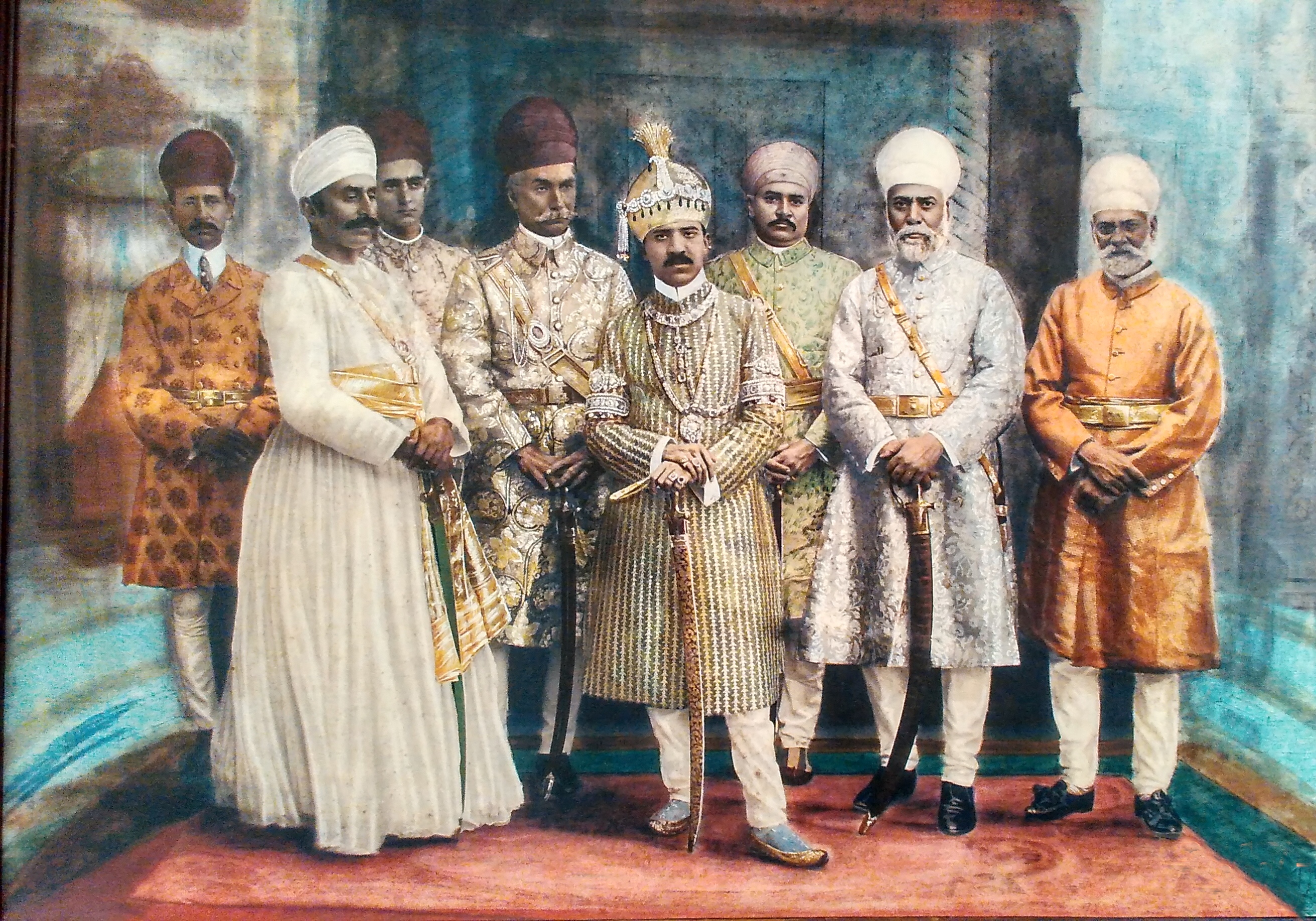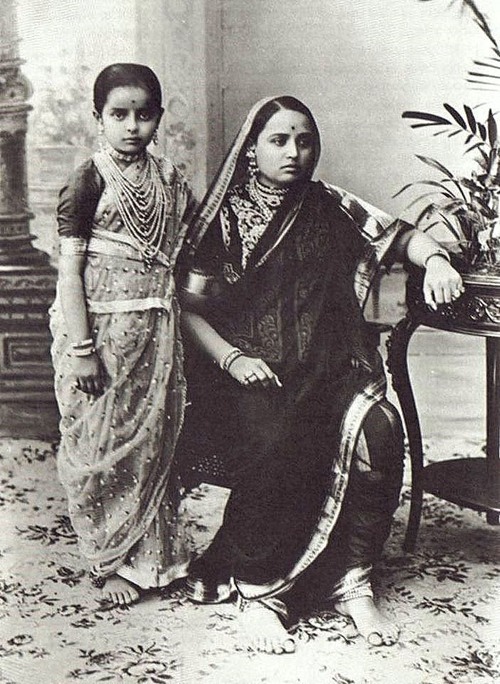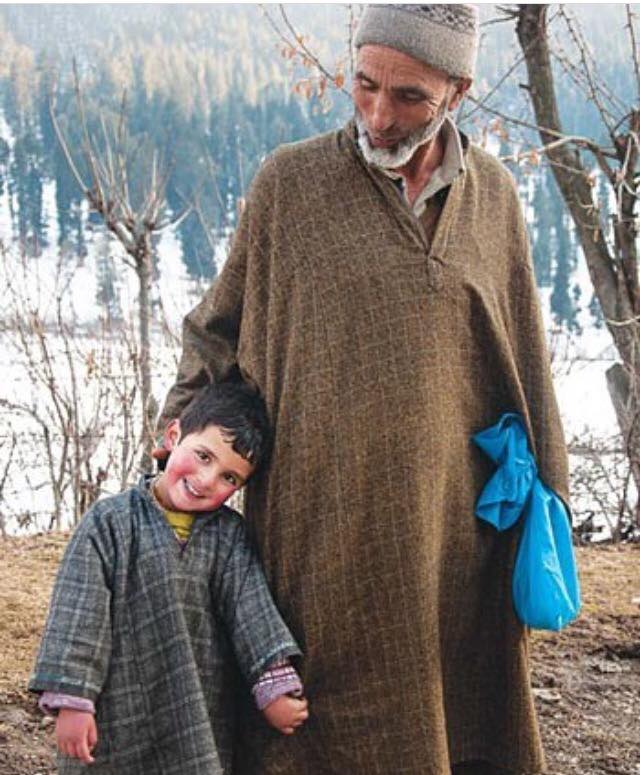|
Kediyu
The kediyu is a garment worn by men in the rural coastal parts of western Gujarat, including Junagadh district. The kediyu is a long sleeved upper garment, pleated at the chest, which reaches to the waist. The prints on the kediyu include bandhani designs which are local to Gujarat and Rajasthan. The kediyu is often worn with chorno, also called kafni, which refers to the pantaloons that are wide and tied loosely at the ankles, and is based on the styles worn in Iraq which were introduced to the coastal region during the 7th century by traders.Satish Saberwal, Mushirul Hasan (2006) Assertive Religious Identities: India and Europ/ref> The chorno/surwal can also be worn with a Jama costume, jama. File:India (Gujarat), man's costume, 1970s-1980s - Bunka Gakuen Costume Museum - DSC05310.JPG, India (Gujarat), man's kediyu suruwal, Bunka Gakuen Costume Museum File:Navratri Garba.jpg, Man on the left in jama and chorno (jama/suruwal) File:Rrrraas!.jpg, Gujarati men in kediyu File:Band ... [...More Info...] [...Related Items...] OR: [Wikipedia] [Google] [Baidu] |
Gujarat
Gujarat (, ) is a state along the western coast of India. Its coastline of about is the longest in the country, most of which lies on the Kathiawar peninsula. Gujarat is the fifth-largest Indian state by area, covering some ; and the ninth-most populous state, with a population of 60.4 million. It is bordered by Rajasthan to the northeast, Dadra and Nagar Haveli and Daman and Diu to the south, Maharashtra to the southeast, Madhya Pradesh to the east, and the Arabian Sea and the Pakistani province of Sindh to the west. Gujarat's capital city is Gandhinagar, while its largest city is Ahmedabad. The Gujaratis are indigenous to the state and their language, Gujarati, is the state's official language. The state encompasses 23 sites of the ancient Indus Valley civilisation (more than any other state). The most important sites are Lothal (the world's first dry dock), Dholavira (the fifth largest site), and Gola Dhoro (where 5 uncommon seals were found). Lothal ... [...More Info...] [...Related Items...] OR: [Wikipedia] [Google] [Baidu] |
Dupatta
The dupattā is a Hindu shawl traditionally worn by women in Indian subcontinent to cover the head and shoulders. The dupatta is currently used most commonly as part of the women's shalwar kameez outfit, and worn over the kurta and the gharara. Etymology The Hindi-Urdu word ''dupattā'' (दुपट्टा, دوپٹہ), meaning "shawl of doubled cloth," derived from Middle Indic elements stemming from Sanskrit, is a combination of ''du-'' (meaning "two", from Sanskrit ''dvau'', "two" and ''dvi-'', combining form of dvau) and ''paṭṭā'' (meaning "strip of cloth," from ''paṭṭaḥ''), i. e., scarf usually doubled over the head. History Early evidence of the dupatta can be traced to the Indus valley civilization, where the sculpture of a priest-king whose left shoulder is covered with some kind of a chaddar suggests that the use of the dupatta dates back to this early Indic culture. Early Sanskrit literature has a wide vocabulary of terms for the veils and ... [...More Info...] [...Related Items...] OR: [Wikipedia] [Google] [Baidu] |
Turkish Salvar
Turkish şalvar (pronounced shalvar, Turkish: ), Turkish trousers or dimiye are traditional baggy trousers gathered in tightly at the ankle. Men may wear the traditional loose coat, called '' jubba'', over the şalvar. Mustafa Kemal Atatürk Mustafa Kemal Atatürk, or Mustafa Kemal Pasha until 1921, and Ghazi Mustafa Kemal from 1921 until 1934 ( 1881 – 10 November 1938) was a Turkish field marshal, revolutionary statesman, author, and the founding father of the Rep ... changed the dress code in Turkey in the 1920s as part of Atatürk's Reforms, his reforms. However, men and women still wear the şalvar in many areas of Turkey, indifferent to social status. Similar pants in other cultures include the tshalvar, schalwar, salwar kameez, kaccha, patiala salwar, shintijan, sirwal, sharovary, aladdin pants, balloon pants, drop crotch pants, pantaloons, zouave, pluderhose and pumphose. Female dress The traditional clothing for women of Turkey includes the şalvar ... [...More Info...] [...Related Items...] OR: [Wikipedia] [Google] [Baidu] |
Sirwal
Sirwal, also sherwal, saroual, seroual, sarouel or serouelSmith, Robin (199''American Civil War Zouaves'', p. 52. Osprey PublishingAt Google Books. Retrieved 23 August 2013. ( ar, سِرْوَال (''sirwāl''), (''šalvâr'') ku, شهواڵ (''shawal'') Tat: ''şalvar'' ur, شلوار (''shalwâr'') tr, şalvar az, şalvar kk, шалбар (''şalbar'') sh, (шалваре) bn, সালোয়ার (''shalwar'') also known, in some contexts, as (a subtype of) Harem pants, are a form of trousers predating Hellenic influence in the Balkans. They are typically worn in Muslim countries, but also extensively in the Polish Commonwealth, in Mallorca, in the Greek countryside, and other places in the Balkans that were influenced by Ottoman Turks prior to World War II World War II or the Second World War, often abbreviated as WWII or WW2, was a world war that lasted from 1939 to 1945. It involved the World War II by country, vast majority of the world's countries� ... [...More Info...] [...Related Items...] OR: [Wikipedia] [Google] [Baidu] |
Sherwani
Sherwani is a long-sleeved outer coat worn by men in South Asia. Like the Western frock coat it is fitted, with some waist suppression; it falls to below the knees and is buttoned down the front. It can be collarless, have a shirt-style collar, or a stand-up collar in the style of the Mandarin collar. It evolved in the Indian subcontinent in the 19th-century as a result of the outer garment of the late Mughal period, the angarkha—itself evolved from the Persian cape, ''balaba''—being given a western style with a button-down front. Etymology The name of the attire is plausibly derived from Shirvan or Sherwan, a region of present-day Azerbaijan, due to the folk dress of that area (Chokha) which resembles the sherwani. Therefore, the garment may also be a Mughalized derivative of the Caucasian dress due to the ethnocultural linkages of Turco-Persian affinity during the Middle Ages. History The sherwani originated in the 18th century in South Asia, before bein ... [...More Info...] [...Related Items...] OR: [Wikipedia] [Google] [Baidu] |
Sari
A sari (sometimes also saree or shari)The name of the garment in various regional languages include: * as, শাৰী, xārī, translit-std=ISO * bn, শাড়ি, śāṛi, translit-std=ISO * gu, સાડી, sāḍī, translit-std=ISO * hi, साड़ी, sāṛī, translit-std=ISO * kn, ಸೀರೆ, sīre, translit-std=ISO * knn, साडी, कापड, चीरे, sāḍī, kāpaḍ, cīrē, translit-std=ISO * ml, സാരി, sāri, translit-std=ISO * mr, साडी, sāḍī, translit-std=ISO * ne, सारी, sārī, translit-std=ISO * or, ଶାଢ଼ୀ, śāṛhī, translit-std=ISO * pa, ਸਾਰੀ, sārī, translit-std=ISO * ta, புடவை, puṭavai, translit-std=ISO * te, చీర, cīra, translit-std=ISO * ur, ساڑى, sāṛī, translit-std=ISO is a women's garment from the Indian subcontinent, that consists of an un-stitched stretch of woven fabric arranged over the body as a robe, with one end tied to the waist, wh ... [...More Info...] [...Related Items...] OR: [Wikipedia] [Google] [Baidu] |
Qamis
Shalwar kameez (also salwar kameez and less commonly shalwar qameez) is a traditional combination dress worn by women, and in some regions by men, in South Asia, and Central Asia. ''Shalwars'' are trousers which are atypically wide at the waist but which narrow to a cuffed bottom. They are held up by a drawstring or elastic belt, which causes them to become pleated around the waist. The trousers can be wide and baggy, or they can be cut quite narrow, on the bias. Shalwars have been traditionally worn in a wide region which includes Eastern Europe, West Asia, Central Asia, and South Asia. The ''kameez'' is a long shirt or tunic. The side seams are left open below the waist-line (the opening known as the ''chaak''), which gives the wearer greater freedom of movement. The kameez is usually cut straight and flat; older kameez use traditional cuts; modern kameez are more likely to have European-inspired set-in sleeves. The kameez may have a European-style collar, a Mandarin coll ... [...More Info...] [...Related Items...] OR: [Wikipedia] [Google] [Baidu] |
Phiran
Pheran or phiran ( , ) is the traditional outfit for both males and females in Kashmir. The pheran consists of two gowns, one over the other. The traditional pheran extends to the feet, which was popular up to the late 19th century C.E. However, a relatively modern variation of the pheran extends to below the knees, which is worn with a suthan inside (loose form of shalwar) similar to the styles worn in Afghanistan. It is optional to wear the suthan with a long phiran as traditionally lower garments are not worn with pherans. The traditional pheran do not have side slits. According to some sources, the pheran was introduced by Mughal emperor Akbar when he conquered the valley in 1586. In summer, the pheran are made of cotton, but in winter, the pheran is made of wool, covering and protecting the body from the cold especially during snow. These dresses are used by the residents of the Kashmir valley and Kashmiris residing in Chenab Valley. Since Pheran is unique to the kashm ... [...More Info...] [...Related Items...] OR: [Wikipedia] [Google] [Baidu] |
Perahan Tunban
''Perahan tunban'' ( Persian/ ps, پیراهن و تنبان, ''pērāhan wa tunbān''), also known as Peran o Tunban, is a garment worn by men in Afghanistan and in some parts of Pakistan. Design Traditional Perahan and Tunban The ''perahan'' (the upper garment) is wide and loose with the sleeves also worn loose and pendent from the arms.Bellew, Henry Walter (1862) Journal of a political mission to Afghanistan, in 185/ref> The traditional ''perahan'' varies according to the region of Afghanistan with some ending at the knees and others midway between the calf and the feet (in which case small slits are created). The traditional ''perahan'' also buttons on either shoulder, is collarless and is meant to be loose. Further, the traditional ''perahan'' is wide but fits closer to the body down to the waist and then is loose and full down to the knees (thereby flaring out). The ''tunban'' (lower garment) is worn loose and hanging. Some versions of the ''tunban'' have the ample fold ... [...More Info...] [...Related Items...] OR: [Wikipedia] [Google] [Baidu] |
Kurta
A ''kurta'' is a loose collarless shirt or tunic worn in many regions of South Asia, (subscription required) Quote: "A loose shirt or tunic worn by men and women." Quote: "Kurta: a loose shirt without a collar, worn by women and men from South Asia" and now also worn around the world. Quote: "The kurta—the tunic—is likewise variable in its cut. It might be wide or tight, there is variety in the length and width of the sleeves, the height of the slits on either side, and especially the shape of the neck. The length of the tunic varies as well, ranging from upper-thigh to well below the knee. Like most garments of this type, worn by people in many countries in South Asia, the Middle East, and North Africa, the tunic always covers the crotch area of both genders." Tracing its roots to Central Asian nomadic tunics, or upper body garments, of the late-ancient- or early-medieval era, the kurta has evolved stylistically over the centuries, especially in South Asia, as a garment for ... [...More Info...] [...Related Items...] OR: [Wikipedia] [Google] [Baidu] |
Khet Partug
Khetpartug ( ps, خت پړتوګ, ''khət paṛtūg'') ''khat partoog'', is a type of Pashtun clothing worn in Afghanistan and Pakistan. Origin Khetpartug is believed to have originated in Afghanistan. Design Khet The ''khet'' is the upper garment which is loose and slightly tightened at the waist and is more like a tunic or a robe, similar to a smock with wide sleeves and reach below the knees. The khet does not traditionally have side slits, and is worn with a belt at the waist. Partug The ''partug'' is the lower garment which is very loose and full of pleats, with folds all around the waist and made of yards of material. ''Khet partug'' is also similar to the costume worn by men dancing the attan. Photo gallery File:A Loyal Afghan WDL11457.png, Traditional ''khet partug'' (traditional loose Peshawari shalwar) (1842) File:Khattak Dance.jpg, Khattak dance Khattak Attan (Dance) (Pashto: خټک اتڼ , ur, ) is a swift martial attan dance usually performed while carr ... [...More Info...] [...Related Items...] OR: [Wikipedia] [Google] [Baidu] |
Gagra Choli
Ghagra choli (also known as lehenga choli and locally as chaniya choli) is a type of ethnic clothing for women from the Indian Subcontinent, notably in the Indian states of Rajasthan, Gujarat, Madhya Pradesh, Uttar Pradesh, Bihar, Haryana, Punjab, Himachal Pradesh, Uttarakhand, Jammu and Kashmir, as well as in the Pakistani provinces of Punjab and Sindh. In Punjab, the ''lehenga'' is traditionally worn with a kurti. It is a combination of the ''gagra'' or ''lehenga'' (long skirt) and the ''choli'' (blouse), however in contemporary and modern usage ''lehenga choli'' is the more popular and widely accepted term by fashion designers, trend setters, and boutiques in South Asia, since ''ghagra'' is synonymous with the half-slip worn as an undergarment below the sari. Terms and history Historically, the gagra choli evolved from the three-piece attire worn by women in Indus Valley ancient India. The attire consisted of the ''antriya'' lower garment, the '' uttariya'' veil worn o ... [...More Info...] [...Related Items...] OR: [Wikipedia] [Google] [Baidu] |

.jpg)







